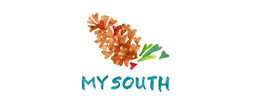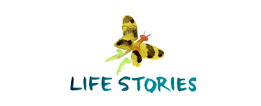I’ve been thinking lately about the things in our lives that help us create family, the experiences and qualities of “home” that knit us together and create the safe place we need to become confident in our best selves. After my husband, Mike, died, we were all engulfed in this wave of sorrow and change and uncertainty, and for my children, a sea of confusion and lack of understanding – an ill-defined sense of loss and insecurity. It was all very natural, and in many ways still an ongoing process at various stages of resolution, even six years later. But, during those early days of grief, I felt so strongly that I needed to focus on making sure our home was a place of security and honesty, where all feelings were welcome and peace would reign. Home-keeping. A tall order in a very chaotic and confusing time of adjustment.

Archive for reading recommendations

Dead poets. Cryptic messages found in old book shops. Underground publications tacked to light poles. Faces blacked out in old black and white photographs. Mysterious hieroglyphs. Collages of artifacts and inspiration.
The world of The Wander Society by Keri Smith is a mysterious one with a call to explore the unplanned and the unexpected. The book begins with an experience in a book shop where the author finds a dog-eared copy of Walt Whitman’s Leaves of Grass, and discovers a hand-written reference to “the wander society” with the directive, “Solvitur Ambulando” — Latin for “it is solved by walking.” In a short 175 pages, Smith describes her pursuits to discover more about this mysterious organization, encounter thinkers and writers who have espoused the precepts it embodies, and develop the practice of wandering herself.

Reaching back to some of the most prominent literary figures of the past several centuries, and including a great many naturalist authors and thinkers, The Wander Society offers a kind of “suggested reading” list for those interested in the pursuit of meandering and the transcendentalist approach to living connected to the present moment and the natural world of one’s surroundings. Part arts and craft instruction and part camping handbook, the book also includes an eclectic mix of how-tos, like how to find a “talisman,” how to pack for wandering, how to make a “wander station”, and how to carve a wandering stick. Beyond that, Smith offers a collection of wandering exercises to help Society members notice their surroundings in new ways, research and document their environment, and grow in their tolerance for unscheduled exploration. In addition to the instructions and literary inspiration, The Wander Society treatise also includes a subplot of chance discoveries of artifacts and handmade zines left by wanderers before, clues to finding wanderer hang-outs, and even a mysterious professor researching the organization.



Whether the existence of The Wander Society as a secret organization is factual or just the very creative product of Keri Smith’s vivid imagination and curiosity, the effect is the same. It’s a mesmerizing collection of visual images and ideas to inspire the reader to forge connections with the physical world around us, and indulge in the discipline of letting go of time and schedule constraints. Although I’m not a subscriber to the book’s suggestion that those stops along the wanderers path and the mystic talismans found there should be elevated to a sacred status, I loved its premise of setting aside opportunities to simply allow ourselves to go where the next step takes us. As we’re surrounded with what seems like a thousand channels and devices feeding us information, each one has an ability to schedule our every moment while removing nearly every element of uncertainty or surprise from our radar. The result is that the value of quietness, wonder, and exploration are sometimes overlooked.
This concept of wandering played a wonderful role in some of our summer together this year… even down to the fact that we began to rename some of our experiences as adventures! Although we didn’t spend much time wandering by foot in this Mississippi heat, we enjoyed several automobile adventures, giving ourselves the freedom to take unexplored highways and roads through scenery and towns we’ve never visited. We set aside times to let the French concept of “flanerie” govern our travels, stopping from one town to the next, wherever an interesting building or shop or hand painted sign captured our attention. I don’t know if that makes us unofficial members of The Wander Society, but I know it helped us make memories and find inspiration in the most unlikely of places. I’ve been wandering in a different way through some of the many photographs I took on our adventures, and I can’t wait to share some of the sights and inspiration from our wanderings. Stay tuned for upcoming posts to the sojourn field guide, my Frog Kisser category archiving some of our backroads, rural adventures, and wanderings.

One of my goals for 2017 is to read at least 25 books. The goal fits into my thinking on three areas of growth I want for myself this year. I’ll share more on that later in the week, but in short, I see this goal of concentrated, intentional reading as a way to expand my thinking and creativity.
I tend to be a binge topic reader. So, while I often have what I deem a “doesn’t require much thought” book in the mix as a way to relax, I also usually have one or two more “serious” reads that fit into whatever binge topic of the moment. For the last two years, it’s been politics and political history — mainly covering a curiosity about the last fifty years. Given the craziness of the current political climate and the uncertainty of the presidency beginning later this week, some of those reads have left a knot in the pit of my stomach. So much about the last few years has seemed a discouraging redux of unrest and social stretching. This year, I wanted to take some of that immersion in history, and tweak it to stretch my own understanding of justice — and injustice. To open my eyes to more marginalized hearts.
So, for the next books on my night stand, I’ve turned to some of the lions in the fight for social justice… a list to prime the pump of my own willingness to speak out, inspired by Dr. Martin Luther King, Jr. on this day we celebrate his legacy.

Strength to Love
by Martin Luther King Jr.
Published in 1963, this collection of sermon notes, bible studies, and convictions about faith and justice served to not only codify the ideals of a movement, but to inspire a new generation of nonviolent activism. Oddly, I’d never heard of it until we visited the National Civil Rights Museum in Memphis a few years ago. The book was in Dr. King’s briefcase in the Lorraine Motel where he was shot in 1968. In her forward to the book, Dr. King’s wife, Coretta Scott King, wrote: “If there is one book Martin Luther King Jr. has written that people consistently tell me has changed their lives, it is Strength to Love.” She described it as the best explanation of “his belief in a divine, loving presence that binds all life.”
Behind the Dream: The Making of the Speech that Transformed a Nation
by Clarence B. Jones and Stuart Connelly
Clarence Jones was a speech writer and advisor to Martin Luther King Jr., and his book offers an account of the weeks leading up to the March on Washington and how the “I Have a Dream” speech came to be. I heard about this book during the coverage of the 6oth anniversary of the March a few years ago, in an interview with Mr. Jones. As a “storyteller” often tasked with framing client messages, I am excited to read this account of how that role is applied to social justice.
March Trilogy
by Congressman John Lewis, Andrew Aydin and Nate Powell
I’ve been holding off on reading this trilogy until the final book came out in 2016. The graphic novels tell the personal story of Congressman Lewis, and his iconic involvement in the civil rights movement. Book One offers an account of his growing up years, his meeting of Dr. King, and the beginnings of the Nashville lunch counter sit-in campaign. Book Two covers efforts during the bus boycott, Congressman Lewis’ rise as a leader of the Student Nonviolent Coordinating Committee, his speech at the March on Washington and the Birmingham church bombing. Book Three, which won a 2016 National Book Award, continues the story including accounts of Freedom Summer, the fight against voter suppression and the march to Selma. The format of the books was inspired by the 1958 comic book, Martin Luther King and the Montgomery Story. We have much to learn from this American hero who is still standing for freedom today. I’ve promised to pass these on to my son when I finish reading them.
Love is Love
Comic Anthology
Love is Love is an anthology of graphic impressions contributed by numerous writers and artists as a response to the Orlando Pulse shooting. The book, organized by Marc Andreyko, benefits the survivors of that terror attack, and shares many of the fears and reactions from the tragic event. Because I have dear friends in the LGBT community, I choose to look carefully at this uncomfortable and raw reaction to unspeakable violence.
So, my journey of seeing inspired by MLK begins. I hope to read with an open mind and an open heart. I hope to share some of my reactions as I make sense of them. And I’m excited to see how these new perspectives will color my own work and voice.
The autumnal equinox arrives tomorrow, and although you wouldn’t know it by the temperatures in Mississippi, that marks the official end of summer. The children and I had some family goals for reading this summer that were a little too ambitious for our travel schedule, but each of us managed to contribute several completed books to our Montgomery Summer Reading List. The kids were quick to insist that I include my own book selections on the list as well. Like me, each of the children really do like to read, but sometimes the fun gets dampened if the reading is some kind of “assignment.” I think they wanted to be sure this was actually a fun family activity and NOT some subversive summertime homework exercise!
In addition to adding some purely fun mysteries to the Summer Reading List, I also read a few challenging books — great books that challenged me to think beneath the surface, to look critically at the culture around me, to wonder at the power of storytelling, and to be moved by the experiences of other humans. Several selections focused on events and the political and social climate of some of my coming-of-age years, the years that are too recent to show up in any of the textbooks in school. As we close out summer, I wanted to share a few posts with thoughts on some of the books I would definitely recommend you add to your reading list.


Nixonland: The Rise of a President and the Fracturing of America
by Rick Perlstein
 I started 2016 wanting to read about politics and history — maybe because the presidential contest was already in such full swing. I was particularly interested in the 1960s and 1970s, and I had been re-reading several books about the story of Watergate by Bob Woodward, including All the President’s Men, The Final Days, and his tracing of Watergate’s impact through five subsequent presidencies in Shadow. My Scribd e-reader subscription offers up suggested reading based on your book history, and Rick Perlstein’s book, Nixonland, popped up. I decided to take a look.
I started 2016 wanting to read about politics and history — maybe because the presidential contest was already in such full swing. I was particularly interested in the 1960s and 1970s, and I had been re-reading several books about the story of Watergate by Bob Woodward, including All the President’s Men, The Final Days, and his tracing of Watergate’s impact through five subsequent presidencies in Shadow. My Scribd e-reader subscription offers up suggested reading based on your book history, and Rick Perlstein’s book, Nixonland, popped up. I decided to take a look.
The book was published in 2008, and was listed as a “notable book” by the New York Times and a number of other publications. As the subtitle suggests, Nixonland is mainly the story of Richard Nixon’s political rise from the somewhat-maligned and disrespected role as Eisenhower’s Vice President to his role as the eventual President of the United States and early architect of the modern Republican Party — plus, many of the bumps in between. It is also, however, an amazingly detailed account of so much of the racial unrest that occurred during those decades, the anti-war movement, the transformation of the Republican and Democratic parties as their souls and public images virtually switched, and ultimately, the dividing of America along the political rift these realities created. I’ve seen no better account identifying the roots of today’s divisive and deadlocked political culture.
Nixonland is not an easy or a short read. It took me a big part of the summer to get through it because of how much detail the author includes. There was a lot to absorb. However, it kept my interest the whole time because of how the author dramatically weaved together so many real-life stories along with Perlstein’s poignant conclusions. It is probably the best and most comprehensive book I’ve ever read chronicling the politics and social issues of the 1960s and early 1970s. What struck me about the book was how much of the political climate mirrors what we see today. Perlstein very effectively traced seeds of our current polarized culture through these very turbulent and formative years in modern American society. So many players in modern politics pop up in the book — presidents, strategists, and politicians who dominate our news stream today. It was amazing and eye-opening to see the dots connected between so many playmakers in the public sphere.
In many ways, Nixonland was a sad book to me. It definitely turned the mirror on American culture and so much of the social issues that are still left unresolved. Reading accounts of the Watts riots, segregation, and the very divided government response alongside today’s Twitter accounts of the Black Lives Matter movement and continued racial tensions now 50 years later was very disheartening to me. To be facing some of the same issues so many years later feels like an indictment on my generation. And, race was just one social issue that emerged. Poverty, trust in government, the specter of war, the role of faith in the public sector, and the emergence of media as a catalyst and impactor of public opinion are all areas from that era that mirror today’s climate.
Perlstein ends his book at Nixon’s landslide victory for re-election in 1972, even as the foreshadowing of the Watergate fallout was looming near. He points out that just 20 months after a routing of his political opposition, Nixon would become the only U. S. President to resign the office in disgrace. Perlstein also ended with an evaluation of “Nixonland’s” logical trajectory — the polarized vitriol we see on every channel today.
“In this book I have written of the rise of two American identities, two groups of Americans, staring at each other from behind a common divide, each equally convinced of its own righteousness, each equally convinced the other group was defined by its evil.
What Richard Nixon left behind was the very terms of our national self-image: a notion that there are two kinds of Americans…. and both have learned to consider the other not quite American at all.”
I highly recommend this book as a necessary read for those like me, who were barely born during these pivotal years in American culture, and yet have had so few opportunities to learn about them in ways that draw the threads tying the last decades of the 20th century to today. Nixonland, though a challenging read, also served as an inspiration for me to engage more critically in this year’s election process, to seek out a variety of voices telling the tales of social issues in our nation, and to re-engage with my own thoughts and beliefs about the nature of the democracy I’m handing down to my children.
I’m excited! In December, I treated myself with a subscription to UPPERCASE Magazine — “a magazine for the creative and curious. My first issue arrived in the mail this week and I can’t wait to immerse myself in it this weekend. At first glance, it promises not to disappoint with beautiful photography and spreads, a great design and intriguing stories and profiles from lots of creative disciplines, all on nice-to-hold uncoated paper. It’s published, edited and designed by Canadian designer, Janine Vangool. It definitely lives up to the teasers I found online it its companion blog. Enjoy a few of my favorite at-first-glance spreads and I let me know what you’re reading this weekend!





![]()
 Hello & welcome! I’m Haley Montgomery, and I’m the designer and owner of Small Pond Graphics. I sometimes fancy myself a frog kisser— a documentarian coaxing poignant moments from unexpected places. This blog has evolved from those moments.
Hello & welcome! I’m Haley Montgomery, and I’m the designer and owner of Small Pond Graphics. I sometimes fancy myself a frog kisser— a documentarian coaxing poignant moments from unexpected places. This blog has evolved from those moments.
The small Pond FIELD GUIDE is part diary, part sketchbook, and part wish list – an archive of ordinary wonders. For years, this space has housed my stories – creative ideas, vintage inspiration, our forays into curious places, and the simple artifacts of quiet of conscious living. Through watercolor, photography, and illustrated tales, these pages uncover the blessing of ordinary days and the wonder found in authentic places and pursuits.
I invite you to open the boxes.
Peek into the drawers.
Rustle through the pages.
I’m honored to have you here.
![]()
![]()
![]()
![]()

© Haley Montgomery for Small Pond Graphics.
All rights reserved.
Sharing of photos and images from this site is acceptable, provided that proper crediting links are included. No downloadable content may be distributed without written permission. All art is a gift forward. Please support designers, creators and makers everywhere by respecting copyright ownership of creative property.

NEED A FROG KISSER?
Phone: 662.312.4001
Contact Haley to dive in















